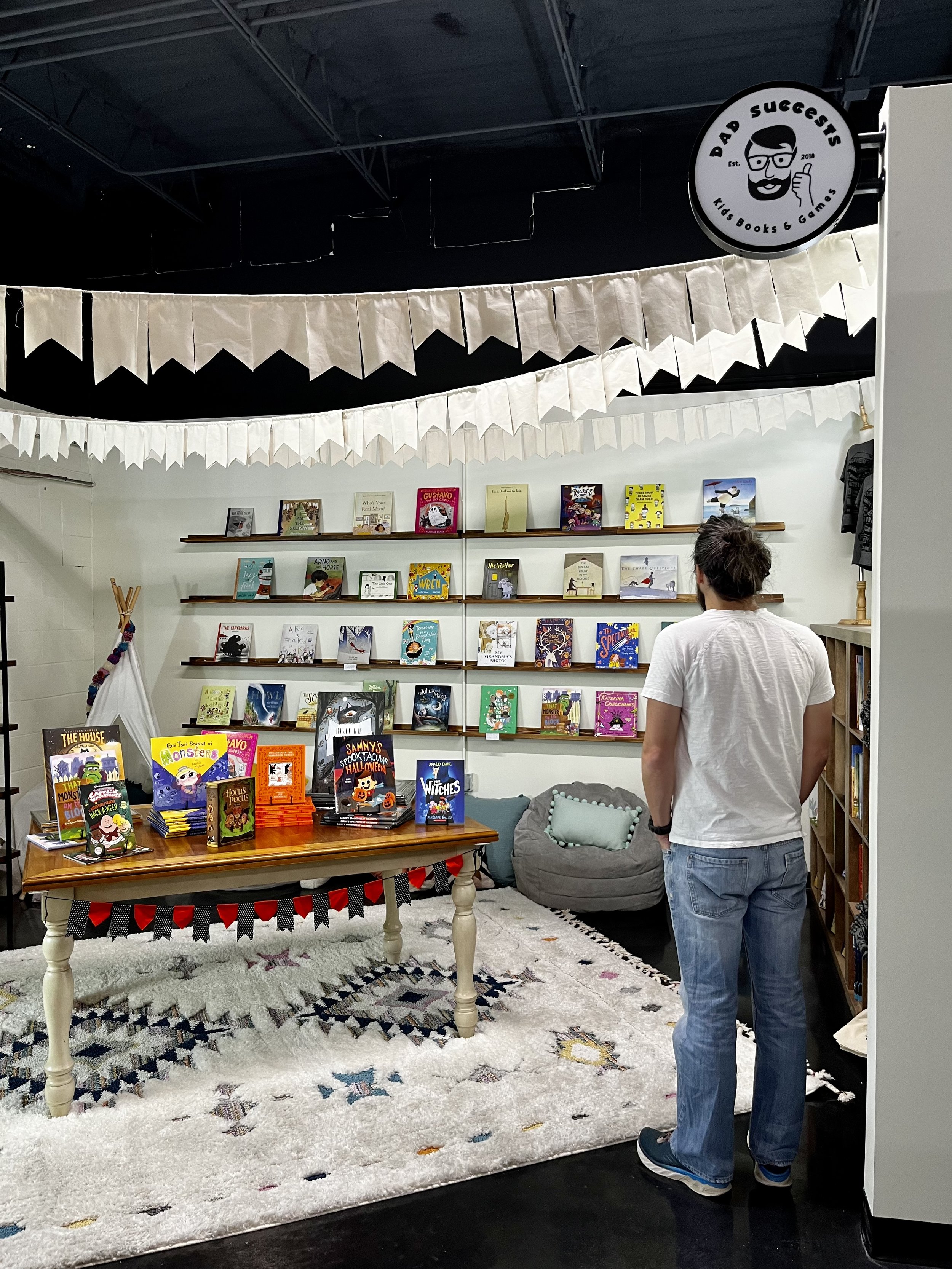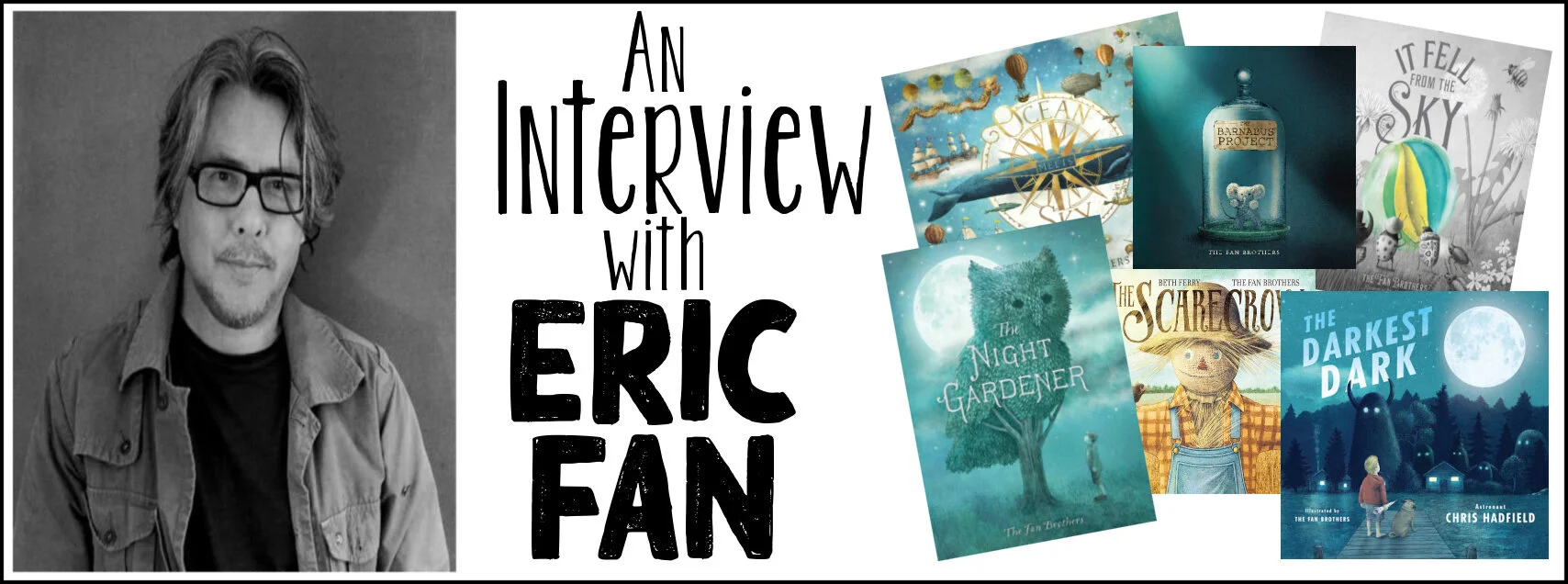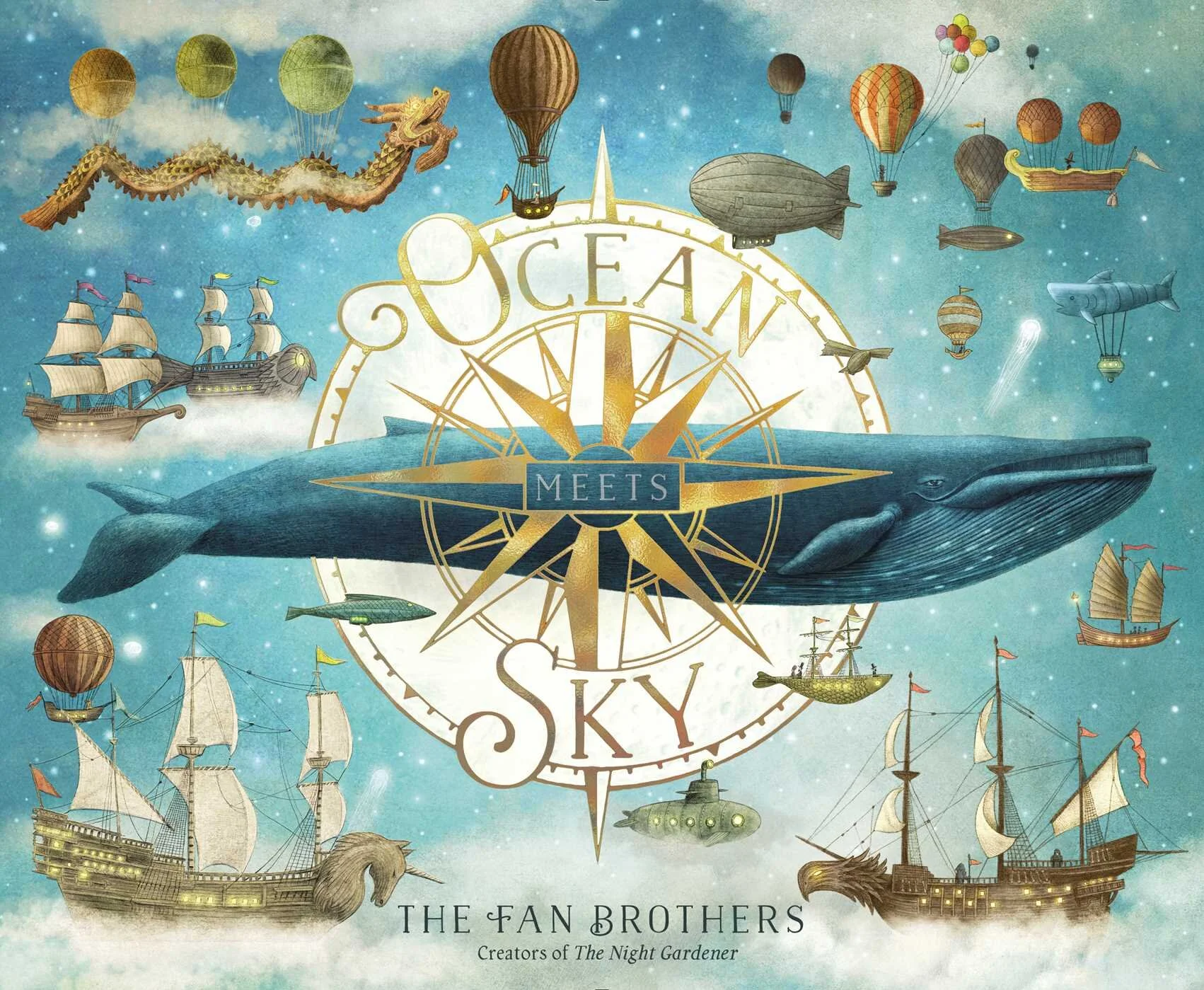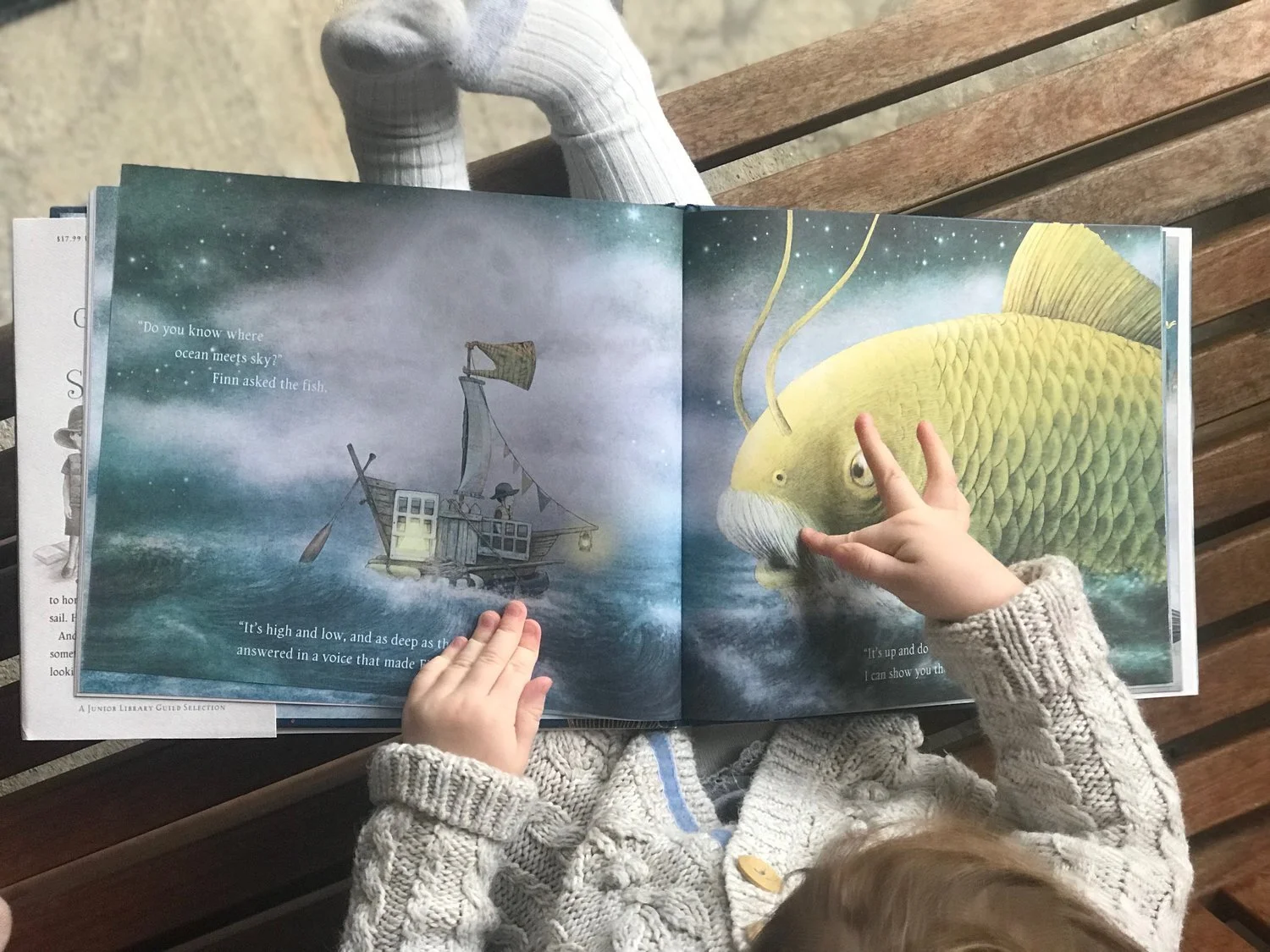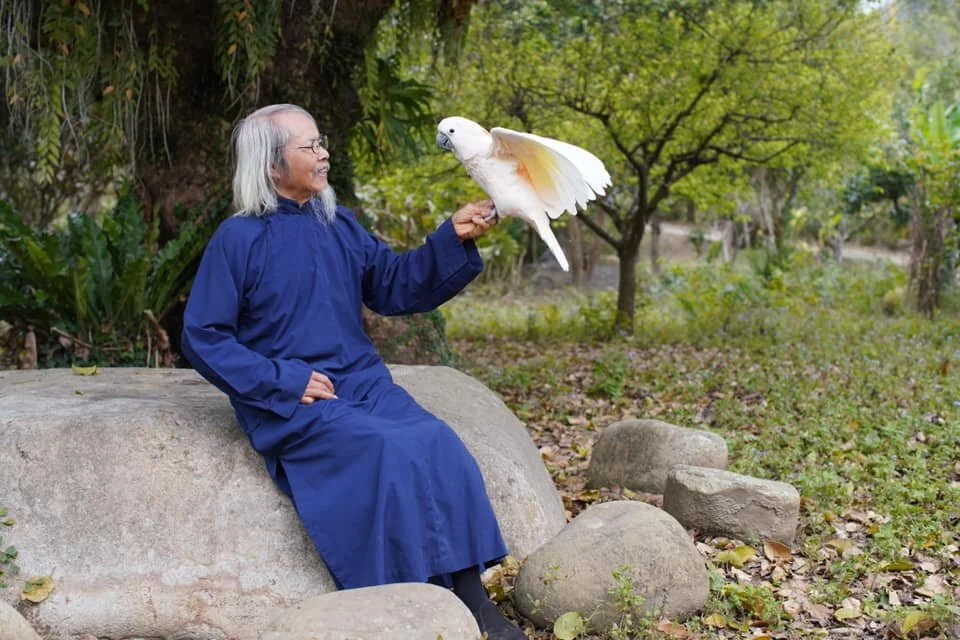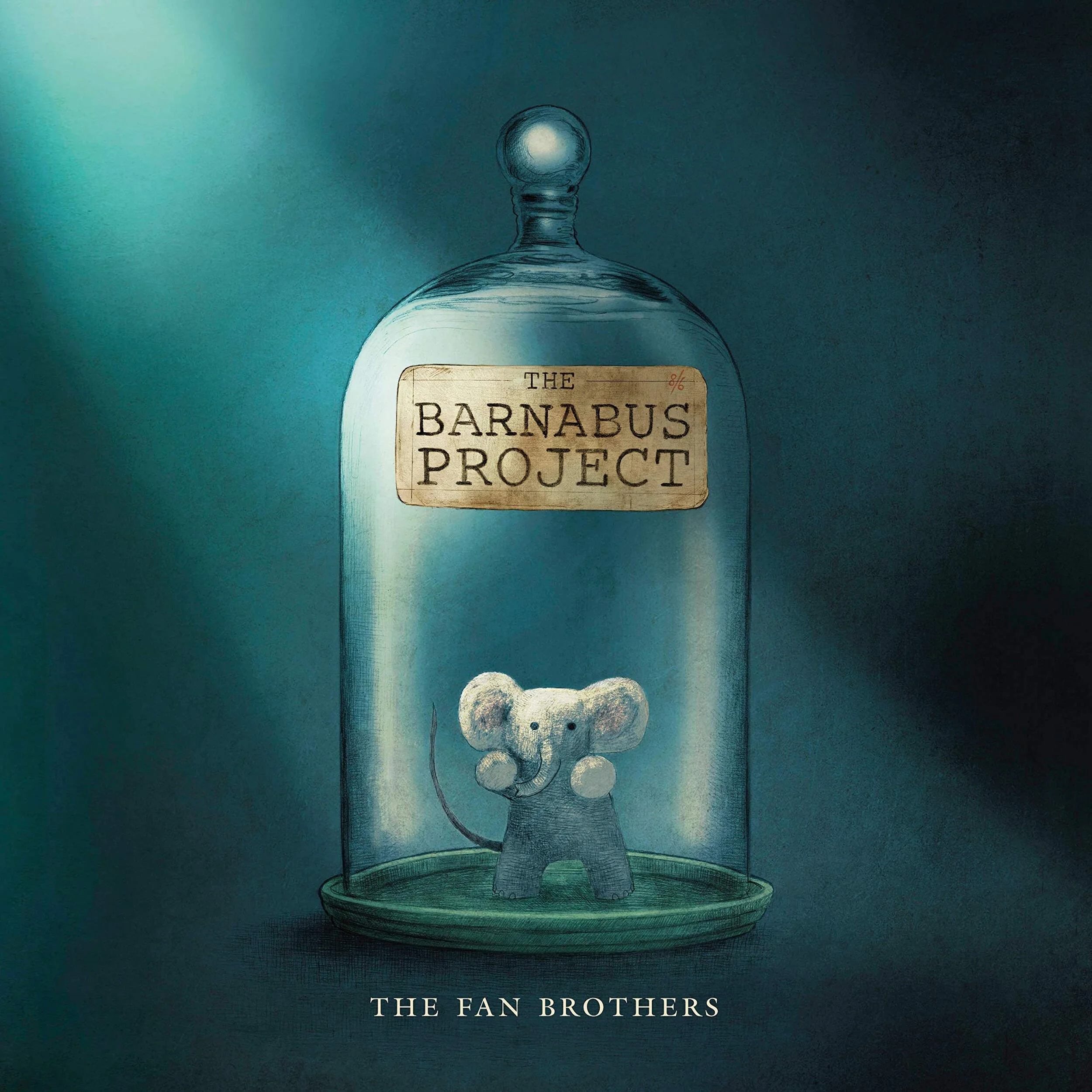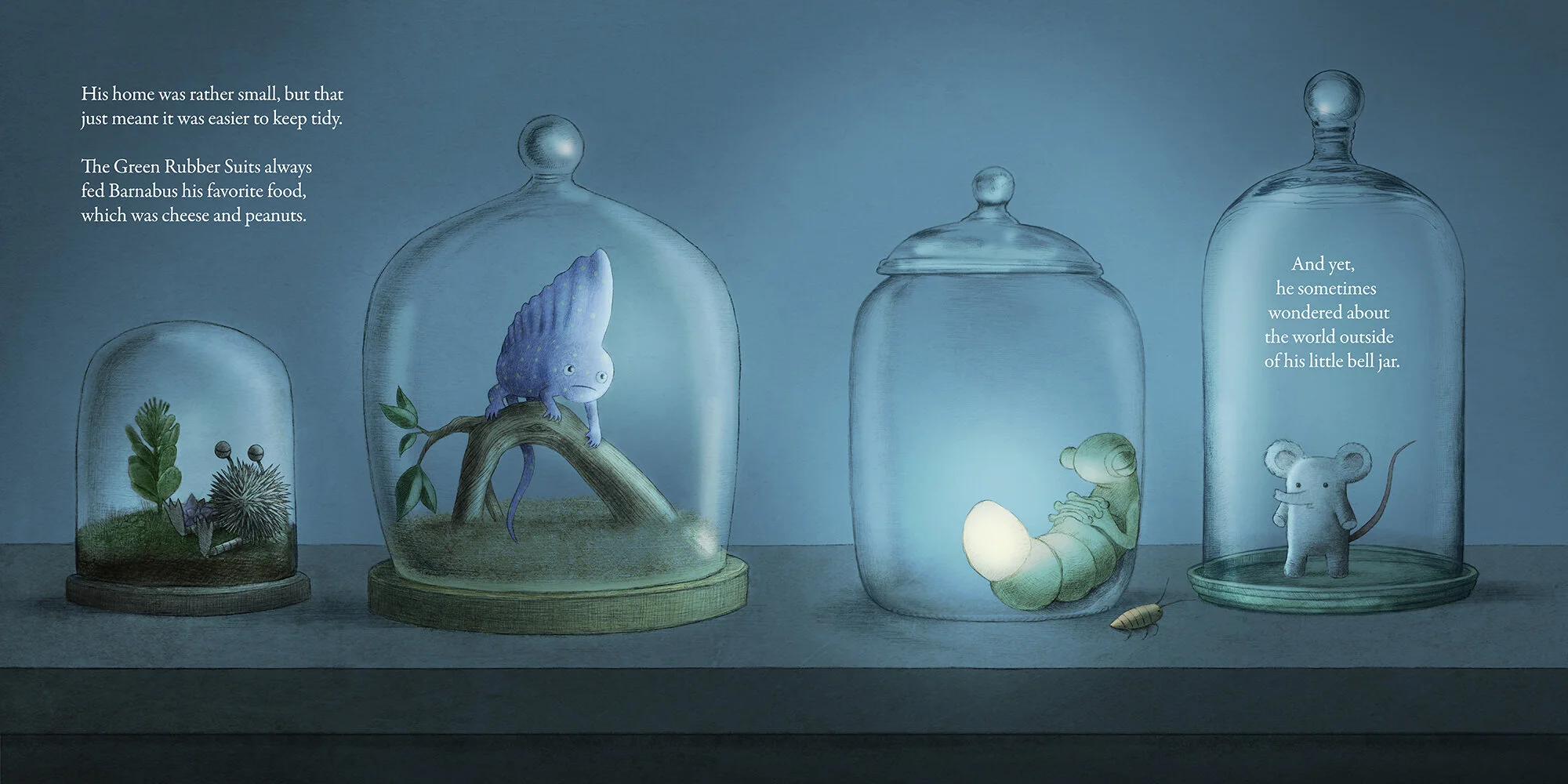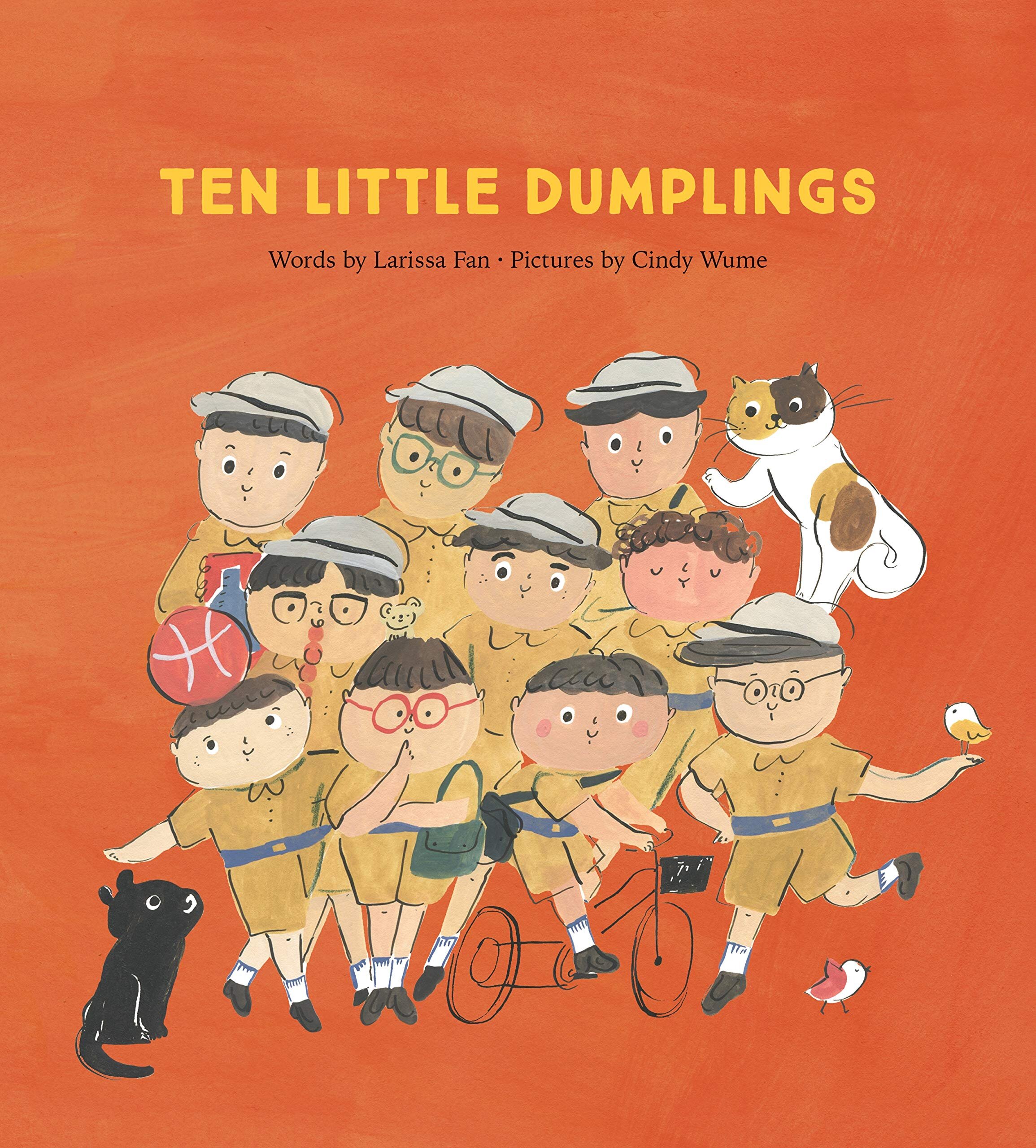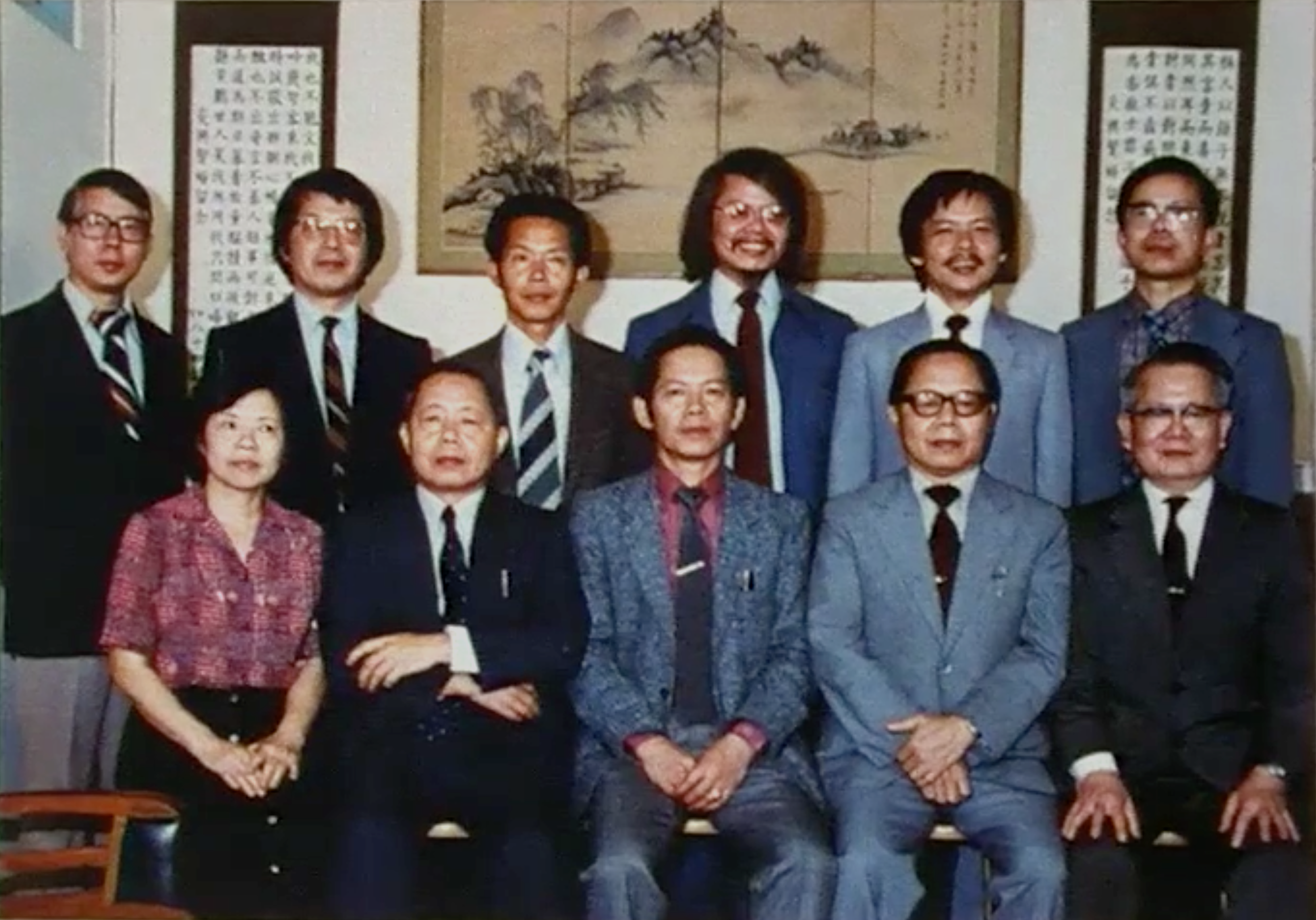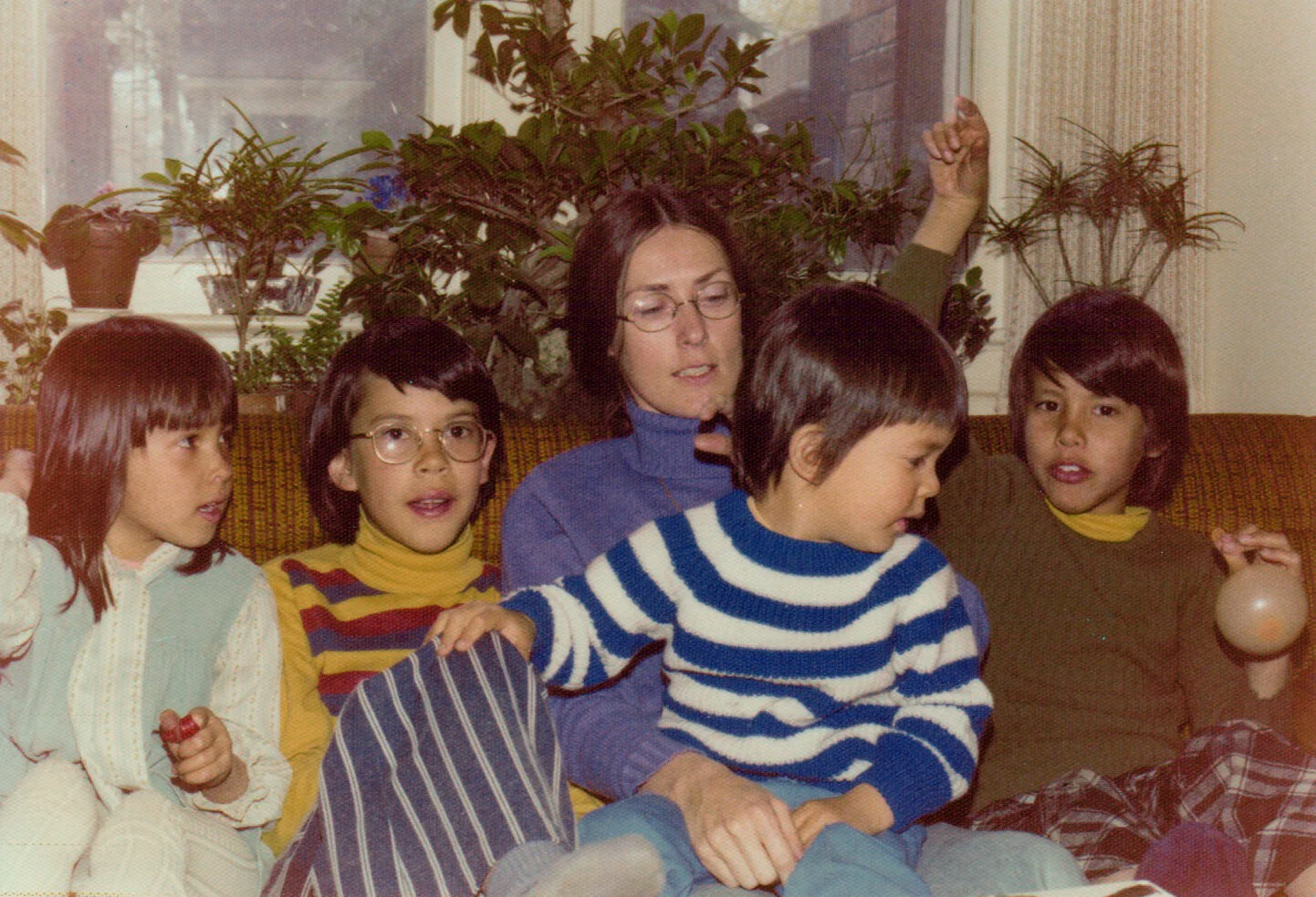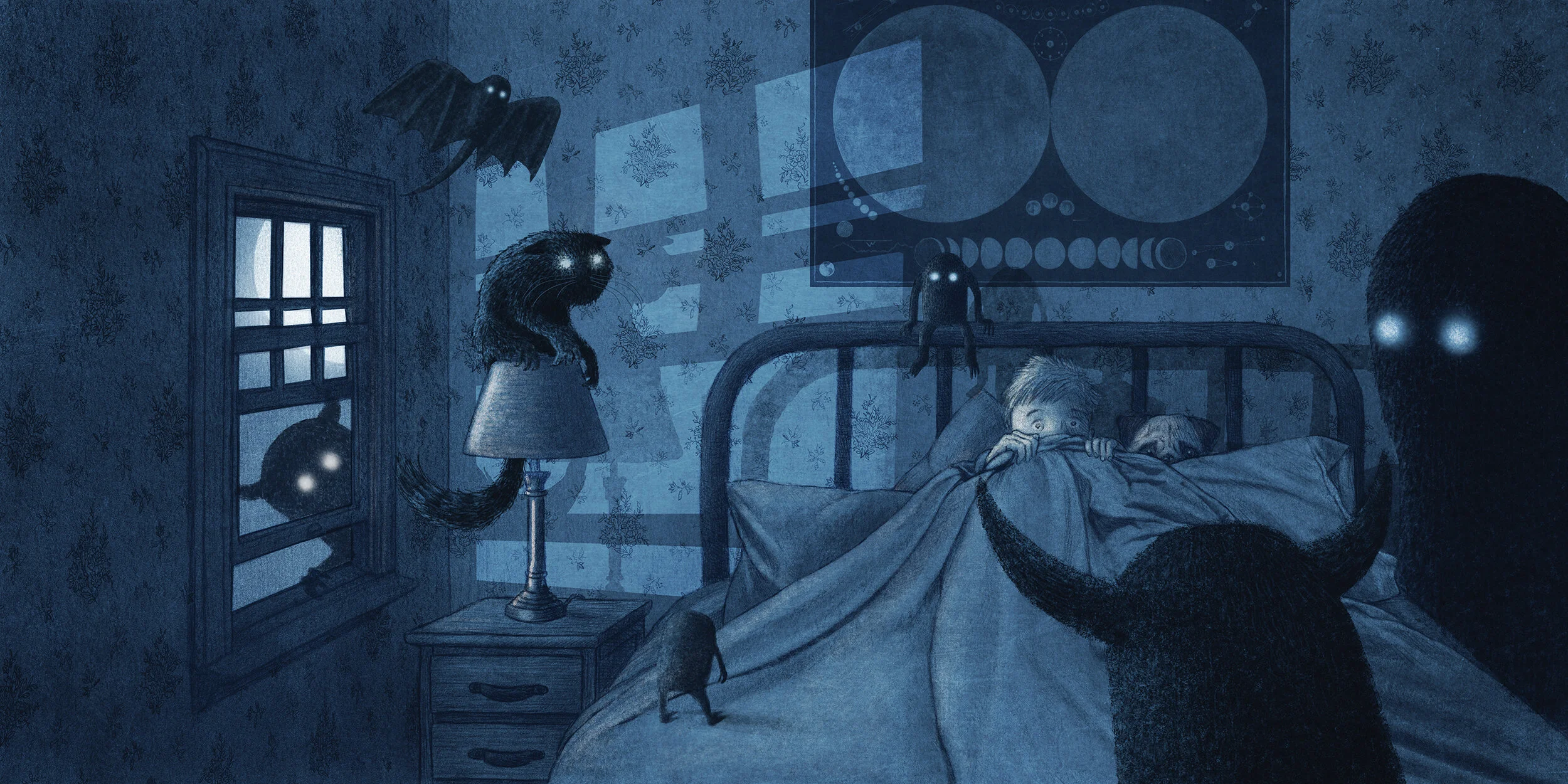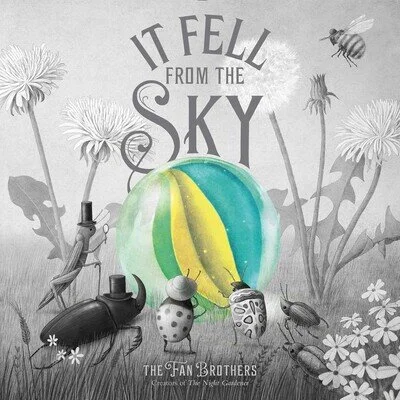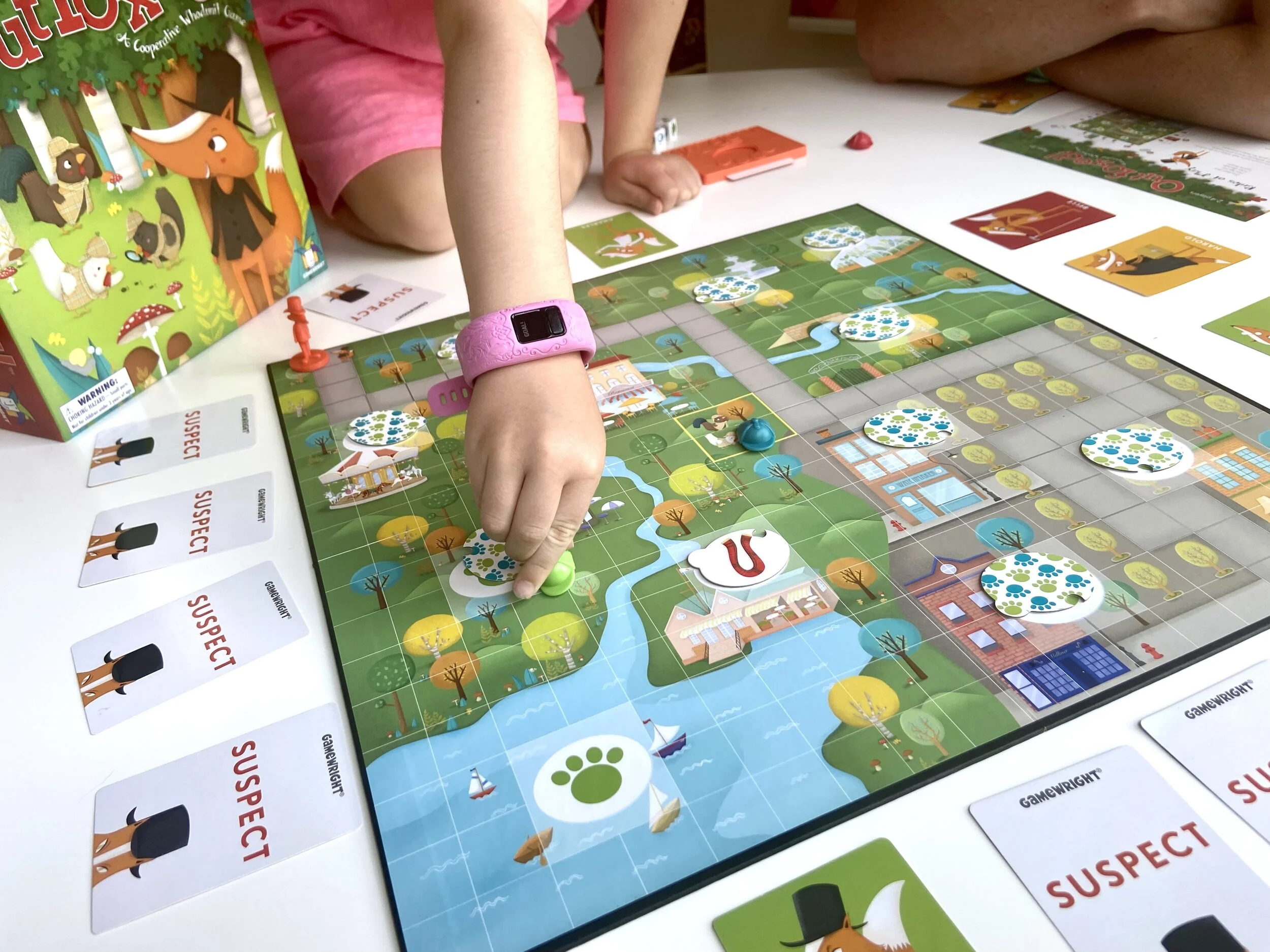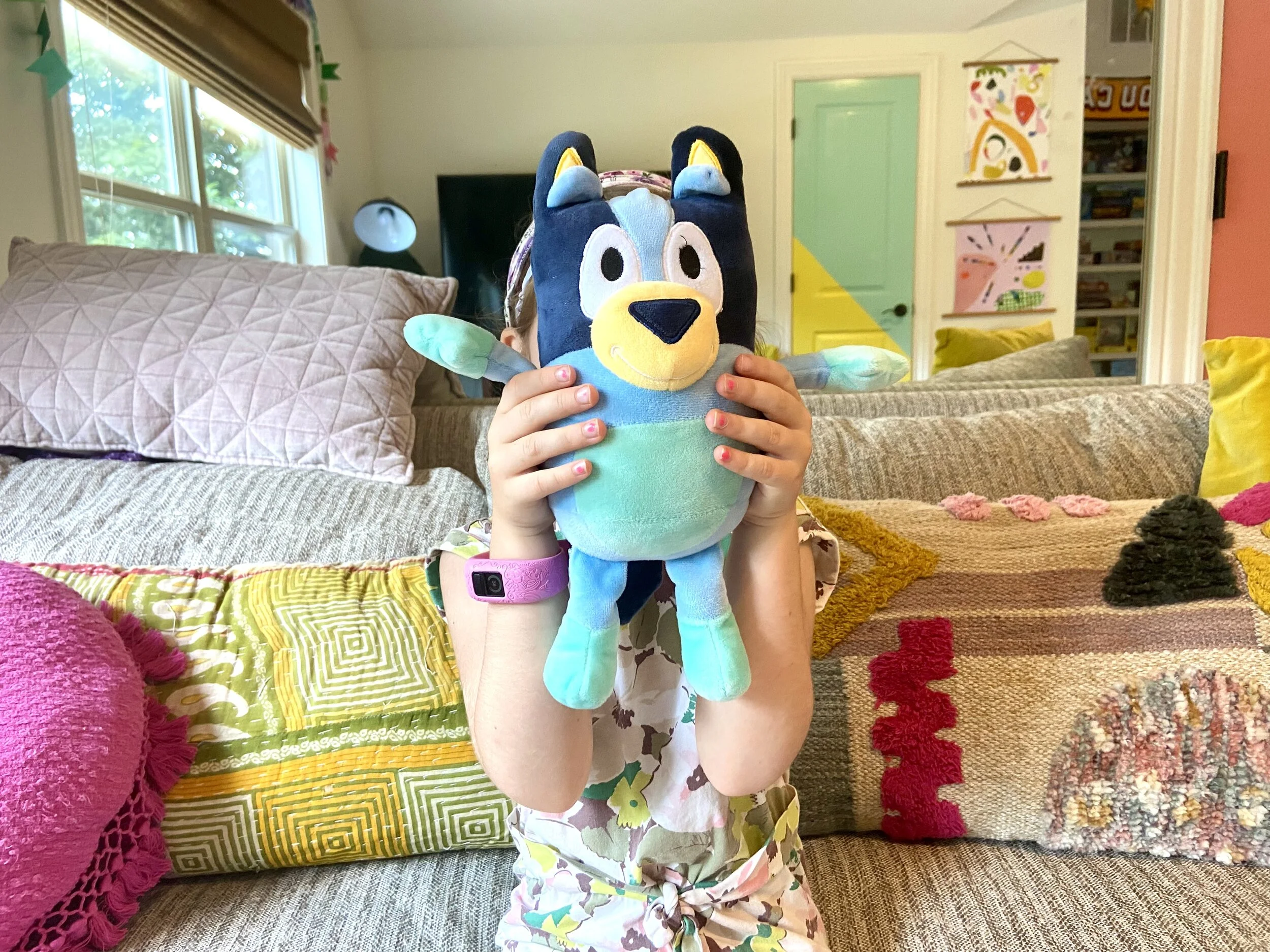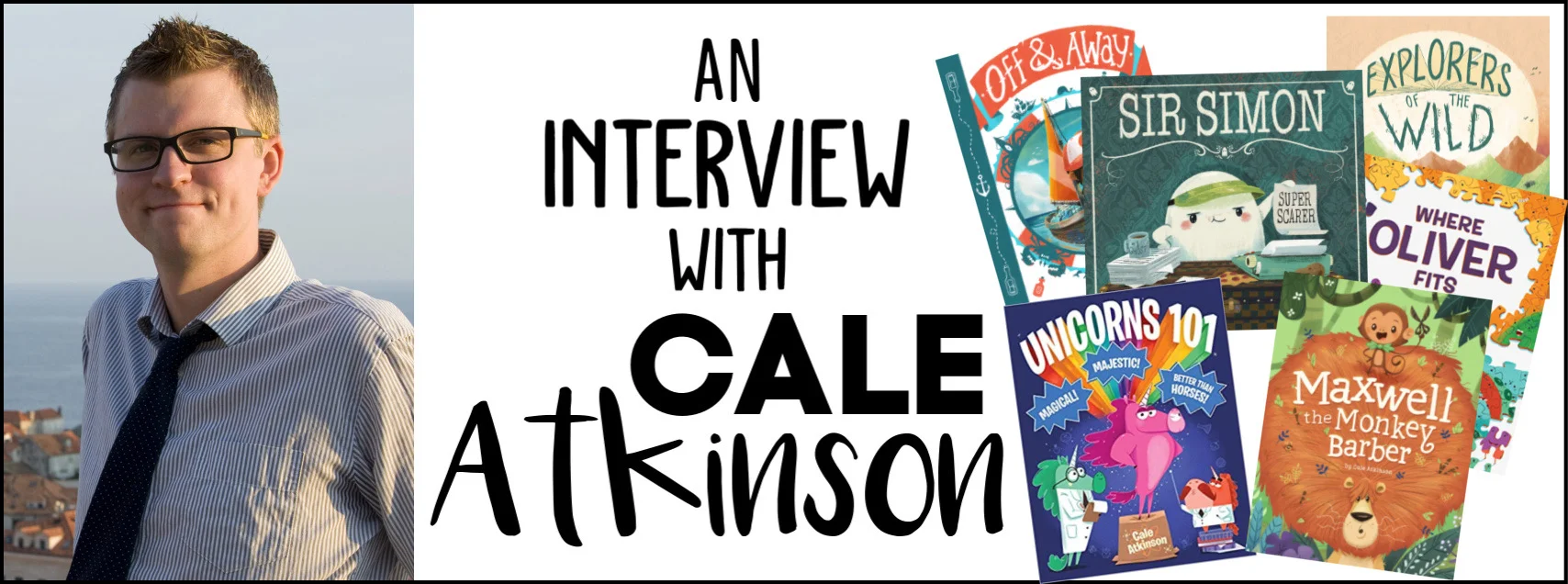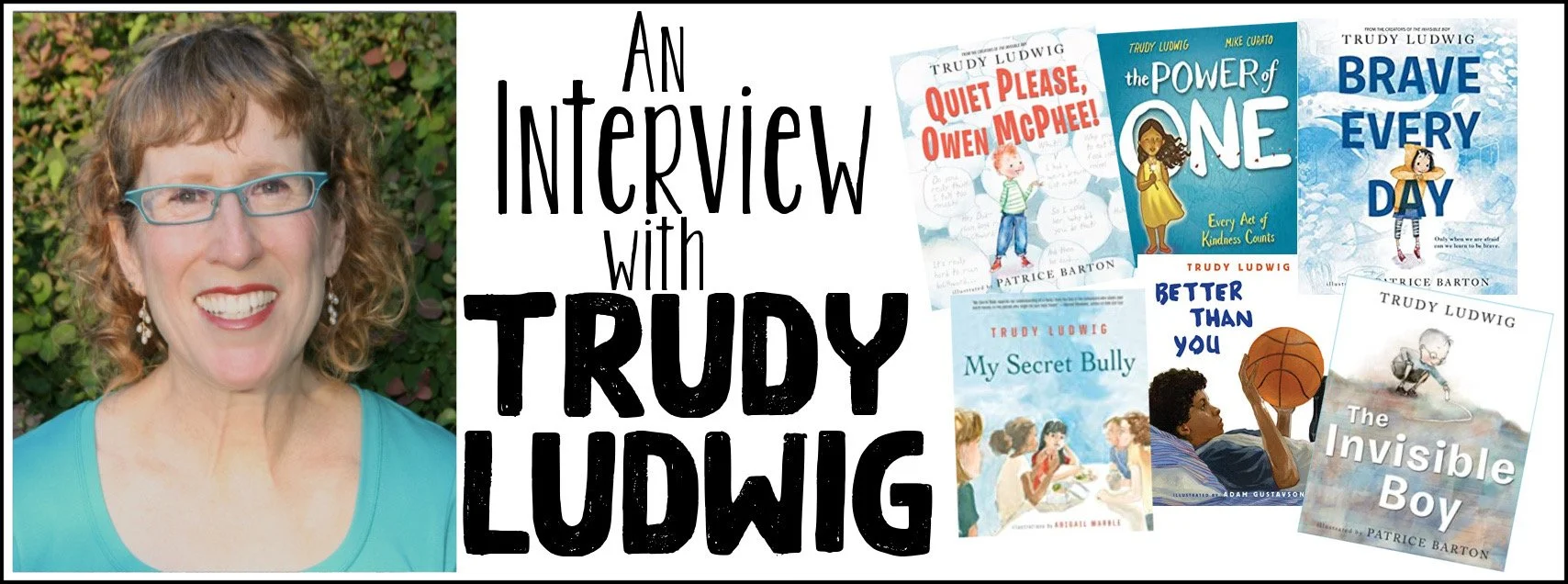An Interview with Eric Fan of The Fan Brothers
I have a very special treat for all of you fans of picture books out there. I recently had the honor of interviewing the very talented Eric Fan of The Fan Brothers - the creators of some of our favorite picture books of all time, including The Night Gardener, Ocean Meets Sky, and The Barnabus Project. Everyone in my family is a big fan of the books they’ve worked on, and I suppose that’s no secret, because they’ve finished 1st place in 2 of our 3 Dad Suggests Picture Book Awards so far!
Of course we had to ask for more insight into some of those family favorites, and I hope that Eric’s in depth answers about those books, as well as his process and his history as an artist, prove to be an enjoyable and enlightening read for everyone. On a personal note, I deeply appreciate Eric’s thoughtful responses, and thoroughly enjoyed everything that came out of this conversation with one of our favorite creators. And, I have to say, it’s also wonderful to hear about his love of scary stories, and his appreciation of the Frances picture books.
And just in case you’re unfamiliar with his work, I strongly encourage you to check out his entire portfolio, including the books where The Fan Brothers are the illustrators of another author’s story. I love Eric’s commitment to the importance of imagination and storytelling in our lives. And I can’t stress enough how much The Fan Brothers’ art style and their own imagination manages to stand out in a sea of picture books. In my own head, sometimes I compare it to the work of Chris Van Allsburg - maybe because it has a command presence and a dreamlike (and borderline ominous) feel to it.
I sincerely hope you enjoy our conversation together. You might even learn something new about one of your favorite picture books. I certainly did. And we definitely leave you with something to look forward to, because Eric has a few announcements about upcoming projects as well. Could we have another contender for the 2021 Dad Suggests Picture Book Awards? The suspense is killing me!
Thanks so much for taking the time to chat with us, Eric. I’m a big fan of your work and I’m excited to pick your mind a little.
Eric: Thanks so much, Ryan.
It’s no secret that we are big fans of your art in our house. But I don’t exactly have the artistic vocabulary to describe why. Could you describe your art style and the process you use to illustrate your books?
Eric Fan of The Fan Brothers
Eric: Strangely enough, it’s a bit hard to describe your own work from the inside as well. I freeze in the same way I used to during job interviews when asked “So tell me a little bit about yourself”. I guess if pushed, I would say our art has a nostalgic, somewhat vintage quality to it, with surreal, whimsical elements.
The process we use to create our art is a mixture of traditional and digital techniques. It usually involves scanning a pencil drawing and then colouring it digitally, but recently we’ve been experimenting with drawing digitally too.
As you know, I just recently discovered your Threadless shop (and my wife and I stocked up on a few new favorite t-shirts). Do you mind telling our readers what Threadless is, and what impact it may have had on your career as a picture book creator?
Eric: Thanks for your support! I’d say it had a fairly significant impact on my trajectory as an artist. At the time I was working in the construction industry, delivering construction equipment. It was a pretty tough job, and I was really only creating art in my spare time, mostly after work and on weekends. Threadless provided a nice creative outlet because there were no barriers to entry.
One of Eric’s T-Shirt Designs on Threadless
By pure serendipity, I happened upon an article about Threadless in the newspaper which explained that it was a crowdsourced website that allowed anyone to submit designs, which were then voted on by the community. The winning designs would then be printed t-shirts and the artist would receive $2,000. I immediately started uploading designs and was dismayed when they all failed spectacularly. The community could be quite harsh with their unfiltered critiques, but that friction is ultimately what honed my designs and helped me to become a better artist. Failure and success are two sides of the same coin, and you learn as much (if not more) from failure as you do from success.
Eventually, I started learning what the audience responded to positively about my art, and surprisingly it was the things that were the most unique and quirky that people reacted favourably to. When I tried to imitate what was already popular I tended to fail, because it wasn’t playing to my inherent strengths as an artist.
Threadless eventually partnered with a site called Society6, and that’s where our artwork eventually gained the attention of our agent Kirsten Hall, who had just started a children’s book agency. In that sense, there’s almost a direct through-line between my decision to join Threadless and getting our first book published. (Author’s Note: You can find Eric’s Threadless shop here!)
The Fan Brothers currently hold the world record for the most Dad Suggests Picture Book Awards first place finishes with 2 - Ocean Meets Sky in 2018, and The Barnabus Project in 2020. Considering there have only been 3 Dad Suggests Picture Book Awards, it’s a remarkable feat. My question is this - when are your publishers going to prominently attach the Dad Suggests Picture Book Awards sticker to all future copies?
Eric: Personally, I would love to see a Dad Suggests Picture Book Award on future copies! Thank you so much for all the support you’ve shown our books.
Ocean Meets Sky is one of my personal favorite picture books of all time. I think it’s a remarkable work of art - incredibly touching and masterfully done. I tried hard to convey how special it is in a featured article. Could you please tell us a bit about what inspired this beautiful story, and what it’s about in your own words?
Eric: Thank you! Another connection between Threadless and our picture books is that our book ideas often find their inspiration in the collaborative t-shirt designs we did together. The Night Gardener had its inspiration in a t-shirt design, as did our most recent book It Fell From the Sky. As visual storytellers we often start with a single standalone image as a springboard for our imagination.
Similarly, Ocean Meets Sky started as a standalone illustration that Terry had done about ten years ago. It showed a whale floating in the clouds, surrounded by ships. Something about the image spoke to us, and we wondered if there was a story we could build around it. As storytellers, you sometimes reflect upon what impact your stories might have upon the reader, and what will be left behind once you’re gone.
The story is essentially about Finn grieving his grandfather, so it’s told from his perspective, but as writers I think our perspective is situated with the grandfather. The seed of the grandfather’s story has grown in Finn’s mind in the same way you hope the seed of your story will grow in the reader’s mind, by expanding their imaginative world in some way.
The book was also a chance to write about our Asian ancestry. There’s a reverence for ancestors and grandparents in Asian culture, and both our grandparents and our parents were amazing storytellers. In Asia, you honour your entire lineage of ancestors, going back hundreds of years, as an acknowledgment that every strand of that lineage leads to you; there’s a sense of profound connectedness in that. As a story about grieving and loss, we wanted to suggest the ways that that connection can be sustained, even after death.
Eric Fan’s father, Kuang Tih Fann
My dad is a philosophy professor who has translated the Tao de Ching into English. There’s a whole branch of Taoism that is focused on longevity and immortality that my dad is convinced arises from a misinterpretation of the original text. In his translation, the key passage talking about immortality is in fact simply talking about being remembered. The idea is that you can never truly die if you are remembered well by those who loved you, and that idea finds its way into Ocean Meets Sky.
Eric Fan with his siblings, mother, and grandparents.
Do you mind giving the same treatment to your latest book - The Barnabus Project - as well? We were particularly interested in the use and meaning of the word “perfect”. Where did this idea come from and what would you say this one is about from your point of view?
Eric: The Barnabus Project had a very long incubation as a book. The initial idea comes from a drawing my brother Devin did about thirty years ago, of a little genetically-engineered creature named Barnabus who was half-mouse and half-elephant. We had the basic story outline, even back then, but really didn’t have any idea about how to get a book published, and so the story sat in hibernation for years and years. We happened to have one of our publishers over for dinner, Tara Walker, and Terry casually brought up Barnabus and pitched the story to her. She loved it, and the rest is history as they say.
When we were first thinking about Barnabus all those years ago, we were fascinated by recent advances in bioengineering and what it might mean for people in the future. We were concerned about the dystopian implications of the technology, and in the decades since I think it’s become even more relevant. With the rise in social media we’re also constantly bombarded with images of “perfection”. It’s a debilitating, harmful concept that’s almost impossible to not be affected by. Advertising plays into the same feedback loop by constantly reinforcing and amplifying those same impossible standards.
The Barnabus Project © The Fan Brothers and Tundra Books
We wanted to write a counternarrative to that, one that celebrated quirkiness, diversity, and being true to yourself. As “misfits” ourselves growing up, it was also a story about finding your community: something I really didn’t find until going to art school.
Quite frankly, I don’t even know what the Caldecott Medal is for if they haven’t recognized your work. The only explanation I can think of is that nobody on the committee has read your books yet. Is there anything I (or our readers) can do to rectify this immediately? Do we need to be calling our senators?
Eric: Haha. Well, that’s very kind of you. At the risk of sounding disingenuous, I don’t really focus very much on awards. If our books can find an enthusiastic audience of readers, or even be one child’s favourite book, I look upon that as a success. To be honest, I imagine winning a big award like that would be a fairly traumatic experience for an introvert. All the attention, not to mention the expectation of delivering a big speech at the ceremony, would be terrifying.
When you and Terry are the illustrators of a picture book that someone else wrote - like with The Darkest Dark - what does that collaboration look like for you and your brother? Is your illustration style so similar that it blends seamlessly together? Do you split the work in some kind of consistent way - like someone is a character man and someone else a scenery man?
Eric and Terry Fan
Eric: I think when you’re illustrating someone else’s text it forces you to stretch a bit, because you’re engaging with someone else’s imagination other than your own. There’s a responsibility to be receptive to that, while at the same time being true to your own imagination and style. It’s a balancing act. As for working as a team, Terry and I have developed a fairly fluid and intuitive way of working together. I guess the easiest metaphor is that it’s like being in a band as opposed to a solo artist.
The work isn’t split along clear, definitive lines, but tends to be more organic, with each of us contributing various elements to the whole until the final illustration slowly emerges from the disparate parts, with a lot of back-and-forth. We share a fairly similar style and aesthetic, so the process isn’t quite as daunting as it sounds.
Does anything change about that dynamic when you are also the authors of the book? Does everyone do a bit of everything? What does collaborating on writing and illustration look like for you? And then what did it look like when your brother Devin joined you for his debut with The Barnabus Project?
Eric: The dynamic is somewhat similar. The Barnabus Project may have been our first published book with all three of us, but the truth is we had already collaborated on a bunch of projects together, so we were used to the dynamic. For many years we tried to break into screenwriting and had written a bunch of scripts together. The process is more-or-less a Darwinian one, where everyone contributes ideas and drawings, and the best ones eventually rise to the top and are preserved for their evolutionary “fitness”.
Your sister, Larissa Fan, also released a picture book recently - Ten Little Dumplings. What a talented family! What can you tell our readers about Ten Little Dumplings, and how might you explain so many siblings growing up to be successful artists? How do you think you were all led down that path?
Eric: I was lucky enough to be one of the first readers of Larissa’s initial story draft, and thought it was brilliant. Larissa is also an experimental filmmaker and had done a short film many years ago called Ten Little Dumplings, that eventually became the inspiration for the book.
In the film and the book, the story is partly biographical. Our father was one of ten brothers growing up in Taiwan, and so his family was quite famous in his local village. It resonated with a popular Ming Dynasty Chinese folktale, Ten Brothers, since it was considered very auspicious to have a family with ten sons.
Eric Fan’s father, Kuang Tih Fann, along with his 9 brothers and 1 sister - the inspiration for Ten Little Dumplings.
My dad and his brothers all grew up to be successful in their respective fields – doctors, teachers, and lawyers. Along with the ten brothers, there was also a sister, who no one really talked about as much. That exclusion became the basis of Ten Little Dumplings, which subverts the Ten Brothers’ story from a feminist perspective.
As to the second part of your question, we all grew up in a fairly creative household. Our mother was a professional harpist, and our dad was always very creative. He liked to do pottery, so we had a potter’s wheel and a kiln in our basement. In one way or another we were all encouraged to be creative, which I think played a part in our eventual career paths.
The Fan children with their mother, Sandra (siblings from left: Larissa, Terry, Devin, and Eric)
Speaking of growing up to be an artist, when did you know it was what you wanted to do, and do you have any personal and actionable advice for kids who are thinking they want to follow in your footsteps?
Eric: Art was always my favourite class in school, but I never really thought about it as a career path until one of my high school teachers pointed out that it was possible to earn a living as an artist, and that I could go to art college after graduating high school.
The best advice I have for anyone wanting to get into the field is to draw as much as possible, and ultimately to get your work seen, which is much easier today than it was in the past. The internet has opened up so many amazing opportunities to get your artwork seen by as many people as possible.
We are very big fans of spooky things in our house, so the first book of yours that we fell in love with was The Darkest Dark. It even made our list of the best scary picture books for kids (probably my very favorite list we’ve built). Your spooky creatures were spectacular. Are The Fan Brothers at all tempted to try and scare us again in the future?
Eric: I’m a fan of spooky things too. My favourite picture book when I was a kid was Where the Wild Things Are and some of my favorite movies when I was a kid were old black and white horror films. I’d love to write a scary picture book someday, but it’s a tricky line to walk.
The Darkest Dark © The Fan Brothers and Little, Brown Books
Parents are understandably wary about introducing kids to something that might frighten them, even though they themselves might love horror movies or scary stories. My feeling is that kids, just like adults, enjoy confronting scary things in a safe context. (Author’s Note: Completely agreed! Neil Gaiman also speaks very eloquently on this exact thing!)
The next book you have coming out is called It Fell from the Sky, and we can’t wait to read it. What can you tell us about it, and when can people get their hands on it?
Eric: It Fell From the Sky publishes this September. It’s about a strange object that falls into a garden one day - an ordinary toy marble, which to the insects is a wonderful mystery. Each of them speculates about its origins, but it’s the spider who sees the potential to profit from it. He claims the marble as his own and begins to exhibit it and charge admission. In doing so, he eventually alienates his entire community and ultimately discovers that sharing is more rewarding than selfish materialism.
Is there anything else in the works already, or are we getting ahead of ourselves?
Eric: Terry and I are currently working on our next picture book together, which is publishing in 2022.
I also have another book coming out in 2022 called Night Lunch, which I wrote but won’t be illustrating. It’s being illustrated by the brilliant Dena Seiferling who is one of my favourite illustrators. I wanted to have someone else illustrate it because I’ve always wondered what it would feel like to be an author handing over a story for another artist to interpret. It’s interesting being on the other side of that creative fence, and I’m so excited by how the book is developing.
What are the three most memorable picture books from your childhood?
Eric: Where the Wild Things Are, Richard Scarry’s Best Storybook Ever, and Bread and Jam for Frances. (Author’s Note: Shout out to Frances! Great picks!)
What are your top three under-the-radar picture books that most of our readers probably haven’t heard of but need to track down?
Eric: I don’t know if they’re under-the-radar in the U.S. but there are some amazing Canadian books I’d like to give a shout out to:
King Mouse by Carey Fagen and illustrated by Dena Seiferling
The Liszts by Kyo Maclear and illustrated by Julia Sarda
The Funeral written and illustrated by Matt James
What are your top 3 movies?
Eric: It’s so hard to pick just three, and the list might change depending on my mood, but here are three films I love:
2001: A Space Odyssey directed by Stanley Kubrick
Ikiru directed by Akira Kurosawa
Inside Llewyn Davis by the Coen Brothers.
Garfield’s Halloween Adventure, or It’s the Great Pumpkin, Charlie Brown?
Eric: That’s an easier pick… Peanuts, always.
What’s the best place for people to follow you and stay up to date with your work?
Eric: I’m probably the most active on Instagram: @ericfanillustration
Thanks so much for taking the time to chat with us, and thanks for everything you’ve given to the picture book community so far!
Eric: Thank you so much, Ryan!
I hope you enjoyed reading! I’d like to once again thank Eric Fan for such a fun and insightful interview. If you enjoyed it, make sure to check out some of our other interviews with creators:
Cale Atkinson
Merrill Rainey
Michael J. Armstrong
What’s your favorite book from Eric Fan? Let us know in the comments!
